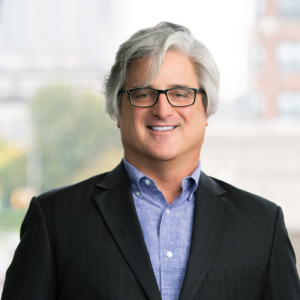In a matter of first impression, the Third Circuit yesterday held that conflicting medical opinions can create a genuine dispute of material fact as to the element of falsity in a False Claims Act action.[1]
Facts of the Case
In U.S. v. Care Alternatives, relators alleged that Care Alternatives, a hospice facility, “admitted patients who were ineligible for hospice care and directed its employees to improperly alter those patients’ Medicare certifications to reflect eligibility.”[2]
Generally, Medicare will pay hospice benefits for individuals who are certified as “terminally ill” by at least one physician. The certification must be accompanied by documentation supporting a medical prognosis that the individual’s life expectancy is six months or less if the illness runs its normal course.[3] The relators’ expert opined that in 35 percent of the sample cases he reviewed, a reasonable physician would not have certified the patients as terminally ill with a prognosis of six months or less based on the accompanying documentation. Reviewing the same sample set, Care Alternatives’ expert disagreed, finding that a reasonable physician could reasonably certify each case.[4]
Interplay of Falsity and Scienter
The district court found that relators “could not prove falsity because they had not produced evidence that any physician lied and ‘received a kickback to certify any patient as hospice eligible’ or ‘certified any patient whom that physician believed was not hospice eligible.’”[5] The Third Circuit held that the district court improperly “incorporated a scienter element into its analysis regarding falsity.”[6] In reversing the district court’s holding, the Third Circuit sought to “make clear that in our Court, findings of falsity and scienter must be independent from one another for purposes of FCA liability.”[7] It explained that “[s]cienter helps to limit the possibility that hospice providers would be exposed to liability under the FCA any time the Government could find an expert who disagreed with the certifying physician’s medical prognosis.”[8] It warned that by folding the scienter element into an “objective” falsity test, a court fails to fully consider evidence of scienter.[9]
The Third Circuit specifically disagreed with the Eleventh Circuit’s recently issued opinion in U.S. v. AseraCare Inc.,[10] which upheld an “objectively false” standard. In AseraCare, the court adopted a bright-line rule that “‘a reasonable difference of opinion among physicians reviewing medical documentation ex post is not sufficient on its own to suggest that [the original medical judgments, and therefore the claims based thereon] … are false under the FCA.’”[11] The AseraCare court opined that “[a] properly formed and sincerely held clinical judgment is not untrue even if a different physician later contends that the judgment is wrong.”[12] Despite disagreeing with this conflation of the falsity and scienter elements, the Third Circuit agreed with the general proposition. It preferred the Sixth Circuit’s distinction, however, that the sincerely held medical opinion is saved from FCA liability by the scienter element, and not by a conclusion that it cannot be false.[13] Nevertheless, the Third Circuit praised the Eleventh Circuit’s decision in the same case to vacate the district court’s order granting summary judgment and to remand the action for further development of the scienter element.[14]
Other circuits have also grappled with the issue of whether an honestly held opinion that a claim was not false goes to the falsity of the claim or the scienter of the claimant.
In U.S. ex rel. Harman v. Trinity Indus. Inc., the Fifth Circuit considered whether a statement of compliance with guardrail testing regulations was false.[15] The regulations required that design changes be submitted to the Federal Highway Administration for approval “unless an exercise of good engineering judgment finds they were not significant.”[16] The court reviewed evidence of whether the engineering judgment exercised was “good” under the falsity element and reviewed evidence of the honesty of that judgment—good or bad—under the scienter element. In the end, that case was dismissed on materiality alone.
The First Circuit made a similar distinction in U.S. ex rel. Jones v. Brigham & Women’s Hospital, finding that questions of fact on the falsity and scienter elements precluded summary judgment where allegedly false statements were submitted in a grant application for Alzheimer’s research studies.[17] The applicant stated that the preliminary research results were based on reliable testing methods. Whether the methods used were actually reliable was an issue on which reasonable minds could differ and went to the falsity of the statement, but whether the applicant knew them not to be reliable was a matter of scienter.[18]
Like the Eleventh Circuit in AseraCare, however, the Ninth Circuit appears to have conflated falsity and scienter in Hooper v. Lockheed Martin Corporation.[19] There, a relator alleged that Lockheed fraudulently underbid project costs to win a government contract. The initial bid was supposed to reflect the contractor’s good faith estimate of the cost of the project. The issue of falsity was barely discussed in Hooper, though the court reviewed allegations that the proposed costs were deliberately reduced from current market rates. Unlike the Eleventh Circuit, the Ninth Circuit found that whether the estimated costs were stated in good faith was a question of scienter, not falsity.[20] Whether based on falsity or scienter, the jury found no FCA liability when the case proceeded to trial on remand.[21]
Third Circuit Holding Limited to Falsity
Ultimately, the Third Circuit in Care Alternatives acknowledged that the district court’s holding “was based solely on its analysis of the falsity element,” and therefore its appellate “decision is limited to the same.”[22] It remains to be seen, therefore, whether on remand the district court will find a different basis to grant Care Alternatives summary judgment based on consideration of scienter, causation or materiality—the other elements of FCA liability that Care Alternatives challenged in its original motion.[23]
Practical Takeaways
- The element of falsity in FCA cases is a question for a jury when reasonable medical professionals could opine differently.
- A jury determination that a claim was, in fact, false, however, does not immediately trigger FCA liability. Relators must establish that the provider knew the claim was false when it was submitted. An honestly held belief that the claim was not false will defeat the scienter element but that credibility determination is typically reserved for the jury.
- Basic tenants of summary judgment are undisturbed by this case. If the facts adduced only support an inference in favor of one party—for example, that even assuming falsity there was no knowledge on the part of the provider—then summary judgment remains appropriate.
- A provider might not be able to rely on an after-the-fact “battle of the experts” to disprove the falsity element in an FCA case; rather, clear and well-supported contemporaneous documentation will provide the best defense that a provider did not knowingly submit a false claim.
If you have any questions, please contact:
- David Honig at (317) 977-1447 or dhonig@wp.hallrender.com;
- Heather Mogden at (414) 721-0457 or hmogden@wp.hallrender.com; or
- Your regular Hall Render attorney.
[1] U.S. v. Care Alternatives, No. 18-3298, 2020 WL 1038083 at *4 (3d Cir. 2020).
[2] Id. at *1.
[3] Id. at *1-2.
[4] Id. at *3.
[5] Id. at *5 (quoting Druding v. Care Alternatives, Inc., 346 F. Supp. 3d 669, 687 (D.N.J. 2018)).
[6] Id.
[7] Id. at *8.
[8] Id. at *5.
[9] Id. at *8 (criticizing this result in U.S. v. AseraCare Inc., 176 F. Supp. 3d 1282 (N.D. Ala. 2016), vacated and remanded, 938 F.3d 1278 (11th Cir. 2019)).
[10] 938 F.3d 1278 (11th Cir. 2019).
[11] Care Alternatives, 2020 WL 1038083 at *8 (quoting AseraCare Inc., 938 F.3d at 1297).
[12] AseraCare, Inc., 938 F.3d at 1297 (emphasis added).
[13] Care Alternatives, 2020 WL 1038083 at *7 (citing U.S. v. Paulus, 894 F.3d 267, 276 (6th Cir. 2018)).
[14] Id. at *8.
[15] 872 F.3d 645, 648 (5th Cir. 2017) (emphasis added).
[16] Id.
[17] 678 F.3d 72 (1st Cir. 2012).
[18] Id. at 96. See also U.S. ex rel. Loughren v. Unum Group, 613 F.3d 300, 310–12 (1st Cir.2010) (holding that, even if “the fact that an allegedly false statement constitutes the speaker’s opinion,” it still “may qualify as a false statement for purposes of the FCA where the speaker knows facts which would preclude such an opinion”).
[19] 688 F.3d 1037 (9th Cir. 2012).
[20] Id.
[21] See Hooper v. Lockheed Martin Corp., 640 F. App’x 633, 635 (9th Cir. 2016).
[22] Care Alternatives, 2020 WL 1038083 at *9.
[23] Id. at *3.


